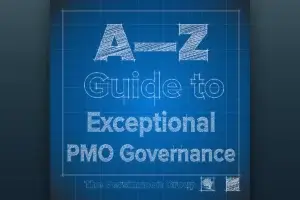When strategy becomes a race to “catch up,” organizations risk chasing relevance instead of creating it.
In the thick of strategic planning season, urgency is often in the air. Leaders feel pressure to act—fast. Digital transformation. AI integration. Employee engagement overhauls. Customer journey redesigns.
It feels strategic. It sounds ambitious.
But there’s a trap hiding in plain sight: chasing what your competitors are already doing isn’t a strategy. It’s survival. And survival alone doesn’t differentiate you.
Too often, strategic plans become glorified catch-up lists—attempts to close perceived gaps between what we’re doing and what everyone else seems to be doing. It’s a seductive mindset, especially in highly competitive markets. But it rarely produces the kind of bold, differentiated value that customers notice and remember.
You can’t outpace competitors by running in their footsteps.
When Strategy Becomes a Productivity Makeover
One early signal that a team may be stuck in catch-up mode is when every priority revolves around optimization.
They’ll say things like:
- “We need to streamline operations.”
- “We’re focusing on internal alignment.”
- “We’re making what we already do work better.”
None of those are bad things. But they’re not inherently strategic either, at least not without context.
When executive teams talk primarily about doing the same things more efficiently, it raises the question: Are we optimizing because we’ve made a strategic choice to focus or because we don’t know where else to go?
A great strategy often requires more than making things better. It requires choosing a different path altogether.
Differentiation Starts With a Different Set of Questions
Real strategy starts with perspective.
Instead of beginning with what’s broken or behind, start with:
- What do our customers need now that they didn’t need last year?
- Where are our competitors heading—and where are they not?
- What emerging dynamics (economic, social, technological) could create space for us to lead?
Differentiation doesn’t come from closing gaps. It comes from spotting openings.
The Framework: Catch-Up vs. Catch-On vs. Carve-Out
To help teams break free of the “strategic to-do list” trap, we often offer this mental model:
| Type of Initiative | What It Is | Strategic Risk |
|---|---|---|
| Catch-Up | Closes known gaps between current performance and industry norms | Necessary, but low innovation; often high internal pressure |
| Catch-On | Follows fast-moving trends already being adopted in your space | Some advantage possible—but short-lived and easily commoditized |
| Carve-Out | Establishes a distinctive position no one else is focused on (yet) | High courage required, but high potential for lasting impact |
All three initiative types have a role. Even leading organizations need to catch up occasionally. But problems arise when every initiative falls into the first two categories.
If your entire strategy is about catching up or catching on, you’re not leading—you’re just trying not to fall behind.
A Better Question: What Do We Want to Be Known For?
A great strategy doesn’t start with “Where are we weak?”
It starts with:
“What do we want to be known for—and how do we make that undeniably true in the eyes of our customers, partners, and people?”
This is where the real magic happens. Because once you define a bold, clear, differentiated outcome, everything else—your goals, your metrics, your initiatives—can align behind it.
Final Thought
There’s nothing wrong with closing gaps. But make sure your strategy is more than a list of “me too” initiatives.
Chasing relevance is exhausting. Creating it? That’s where real momentum begins.
Ready to Stop Chasing and Start Leading?
If your strategic plan feels more like a to-do list than a roadmap to distinction, it’s time for a different conversation. At The Persimmon Group, we help leadership teams break free from reactive planning and define bold, differentiated strategies that lead the market—not follow it.
Let’s co-create the strategy your competitors wish they had.










